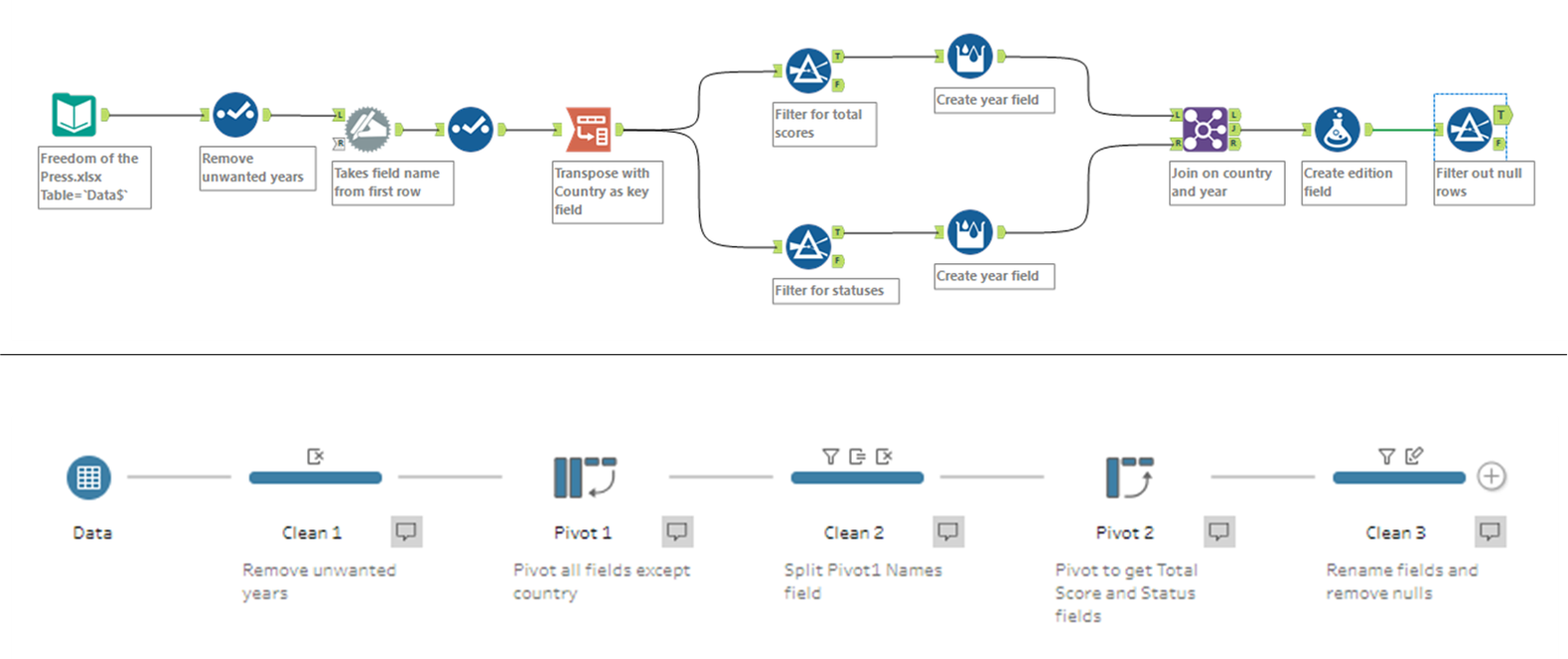

If you're not sure about these details, please contact your database administrator. Depending on your server, these details will vary. In this dialog, enter your connection details.This will bring up the Connection dialog. From the filtered selection of connections, select Microsoft SQL Server.From here, select the search field and type in SQL to instantly filter the available connections. From the home screen, click the Connect to Data button to bring up the Connect pane.To get started, ensure you have Tableau Prep Builder open, then follow these steps: If you're running an earlier version or need instructions on installation, please consult Microsoft's support page at. Note that the provided BAK file is suitable for SQL Server 2016 SP1 or later. BAK) file, which you can restore to your SQL Server instance. This folder contains the Wide World Importers sample database backup (.
#Tableau prep flow download#
In order to follow along with this recipe, download the Sample Files 2.4 folder from the book's GitHub repository. The many connectors provided out of the box by Tableau Prep allow you to connect to databases almost as easily as to file connections, allowing you to quickly start an advanced flow. In this recipe, we'll connect to a Microsoft SQL Server database. From the browse file window, locate and open our statistical file named December 2016 Sales.Rdata.Īnd with just these few steps, Tableau Prep Builder has added the statistical file source to a new flow:.


To get started, ensure you have the sample RData file available on your computer. In order to follow along, download the Sample Files 2.3 folder from the book's GitHub repository. In this recipe, we'll connect to an R file using the statistical file connector. However, if you are unable to obtain your data in such a format from your data science partner, this connector may offer a solution. I advocate the use of open file formats such as CSV or commonly used standards such as Excel. Tableau Prep offers fantastic integration with popular statistical files from SAS (. In this recipe, we'll connect to a statistical file. If you are connecting a BI tool such as Tableau Desktop to your data, selecting the appropriate output type may impact your Tableau workbook performance. Connecting to JDBC or ODBC data sources.

In this chapter, you will find recipes to ingest and output the data you require from and to a wide variety of data types:
#Tableau prep flow how to#
Learn how to work with Tableau extracts.Ingest and output to flat files and a variety of database platforms.However, since the 2020.2.3 release in August 2020, you can output to database platforms such as SQL Server as well, making Tableau Prep a much more appealing tool. When Tableau Prep was initially launched, the only outputs supported were flat files and Tableau native formats TDE and Hyper. Tableau Prep Builder allows you to connect to a large variety of industry-leading data platforms. In the final chapter, you’ll apply the knowledge you’ve gained to build two use cases from scratch, including a data flow for a retail store to prepare a robust dataset using multiple disparate sources and a data flow for a call center to perform ad hoc data analysis.īy the end of this book, you’ll be able to create, run, and publish Tableau Prep flows and implement solutions to common problems in data pipelines. As part of a Tableau Prep flow, you’ll also explore how to use R and Python to implement data science components inside a data pipeline. You’ll also gain an understanding of Tableau Prep Builder and how you can leverage it to create data pipelines that prepare your data for downstream analytics processes, including reporting and dashboard creation in Tableau. Next, the book demonstrates how to perform data cleaning and data aggregation in Tableau Prep Builder. You’ll learn how to obtain data from various data sources, including files, databases, and Tableau Extracts. The book starts by showing you how to set up Tableau Prep Builder. This book will describe, in detail, a variety of scenarios that you can apply in your environment for developing, publishing, and maintaining complex Extract, Transform and Load (ETL) data pipelines.
#Tableau prep flow software#
Tableau Prep is a tool in the Tableau software suite, created specifically to develop data pipelines.


 0 kommentar(er)
0 kommentar(er)
